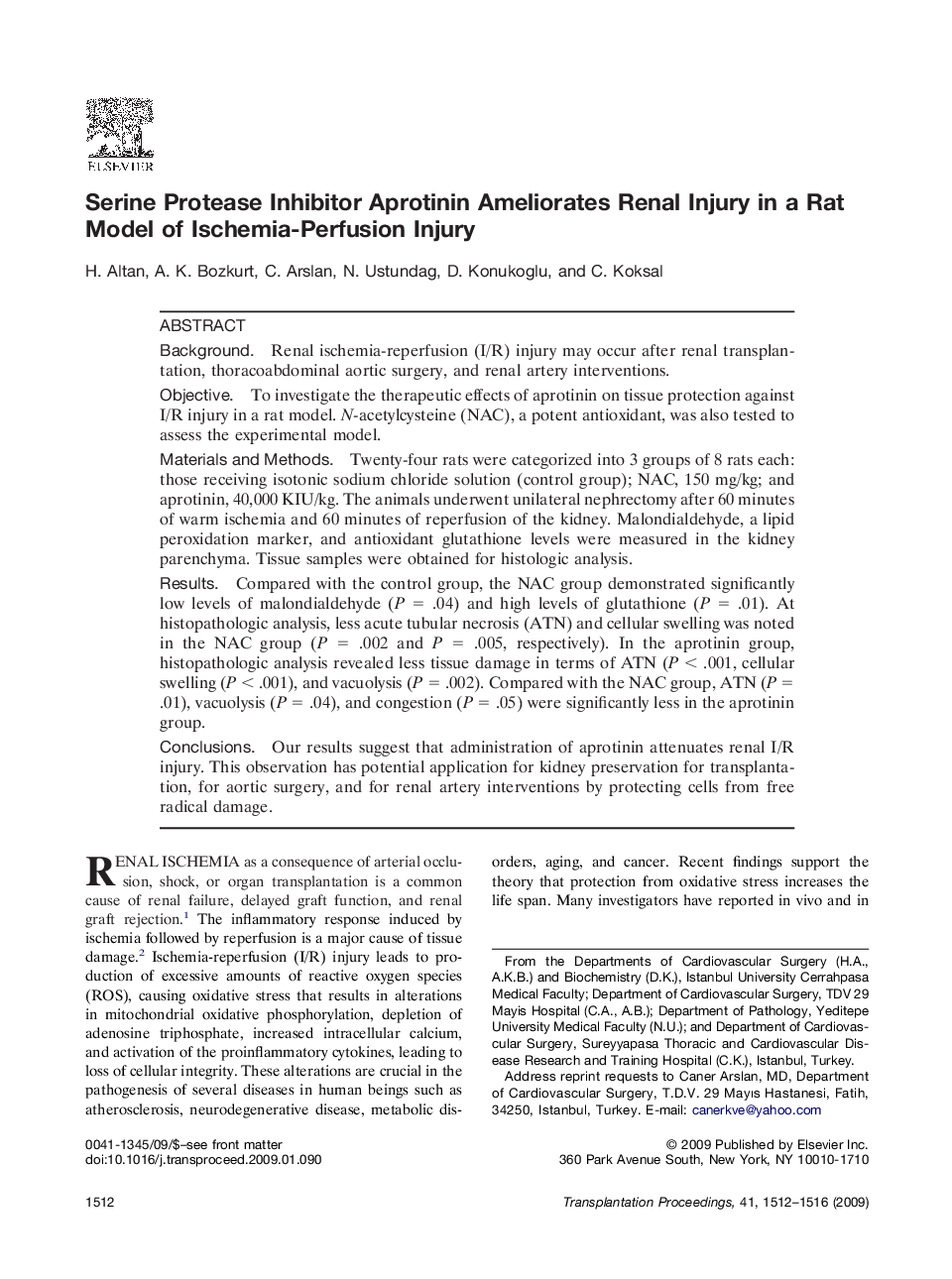| Article ID | Journal | Published Year | Pages | File Type |
|---|---|---|---|---|
| 4259226 | Transplantation Proceedings | 2009 | 5 Pages |
BackgroundRenal ischemia-reperfusion (I/R) injury may occur after renal transplantation, thoracoabdominal aortic surgery, and renal artery interventions.ObjectiveTo investigate the therapeutic effects of aprotinin on tissue protection against I/R injury in a rat model. N-acetylcysteine (NAC), a potent antioxidant, was also tested to assess the experimental model.Materials and MethodsTwenty-four rats were categorized into 3 groups of 8 rats each: those receiving isotonic sodium chloride solution (control group); NAC, 150 mg/kg; and aprotinin, 40,000 KIU/kg. The animals underwent unilateral nephrectomy after 60 minutes of warm ischemia and 60 minutes of reperfusion of the kidney. Malondialdehyde, a lipid peroxidation marker, and antioxidant glutathione levels were measured in the kidney parenchyma. Tissue samples were obtained for histologic analysis.ResultsCompared with the control group, the NAC group demonstrated significantly low levels of malondialdehyde (P = .04) and high levels of glutathione (P = .01). At histopathologic analysis, less acute tubular necrosis (ATN) and cellular swelling was noted in the NAC group (P = .002 and P = .005, respectively). In the aprotinin group, histopathologic analysis revealed less tissue damage in terms of ATN (P < .001, cellular swelling (P < .001), and vacuolysis (P = .002). Compared with the NAC group, ATN (P = .01), vacuolysis (P = .04), and congestion (P = .05) were significantly less in the aprotinin group.ConclusionsOur results suggest that administration of aprotinin attenuates renal I/R injury. This observation has potential application for kidney preservation for transplantation, for aortic surgery, and for renal artery interventions by protecting cells from free radical damage.
